
Callionima falcifera is a moth of the family Sphingidae first described by Bruno Gehlen in 1943. It is known from Mexico, Belize, Nicaragua, Costa Rica and Jamaica, south through northern South America.

Callionima nomius, the fan-tailed bark moth, is a moth of the family Sphingidae. The species was first described by Francis Walker in 1856.
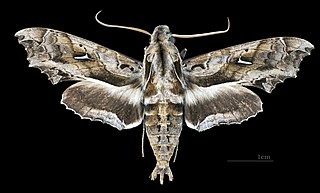
Hemeroplanes triptolemus is a moth of the family Sphingidae.
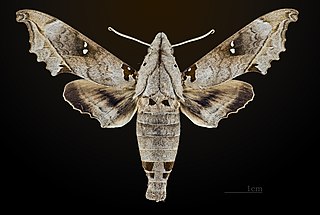
Madoryx oiclus is a moth of the family Sphingidae. It is known from Suriname, French Guiana and from Venezuela to Costa Rica. It has also been recorded in Paraguay, Argentina and Bolivia.

Pachylia ficus, known as the fig sphinx, is a moth of the family Sphingidae. It lives from the northern tip of South America in Uruguay through Central America to the southern tip of the United States straying into Arizona and Texas.

Nephele subvaria is a species of moth in the family Sphingidae.

Manduca brasiliensis is a moth of the family Sphingidae.
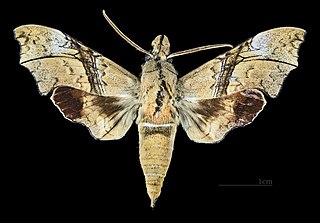
Aleuron iphis is a moth of the family Sphingidae. It was described by Francis Walker in 1856
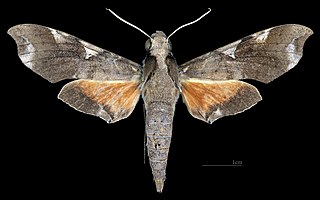
Callionima acuta is a species of moth in the family Sphingidae. It was originally described by Walter Rothschild and Karl Jordan as Hemeroplanes acuta, in 1910.

Callionima denticulata is a species of moth in the family Sphingidae, which is known from Panama, Mexico, Costa Rica, Nicaragua, Bolivia, Peru and western Venezuela. It was originally described by Schaus as Calliomma denticulata, in 1895.

Callionima gracilis is a species of moth in the family Sphingidae. It was originally described by Karl Jordan as Hemeroplanes gracilis in 1923. It is endemic to Cuba.

Callionima grisescens is a species of moth in the family Sphingidae. It was originally described by Rothschild as Calliomma grisescens, in 1894.
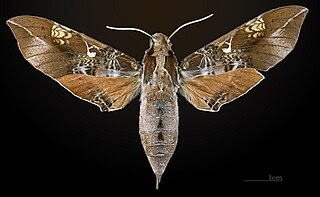
Callionima inuus is a species of moth in the family Sphingidae. It was described by Walter Rothschild and Karl Jordan in 1903.

Callionima pan is a species of moth in the family Sphingidae. It was originally described by Pieter Cramer in 1779.

Callionima parce, the parce sphinx moth, is a species of moth in the family Sphingidae.It was originally described by Johan Christian Fabricius in 1775.
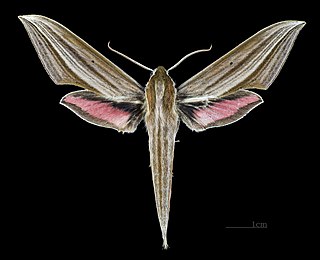
Xylophanes neoptolemus is a moth of the family Sphingidae.
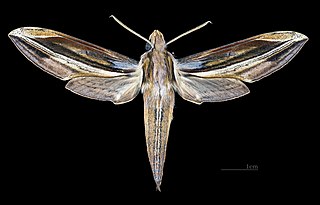
Xylophanes pyrrhus is a moth of the family Sphingidae.
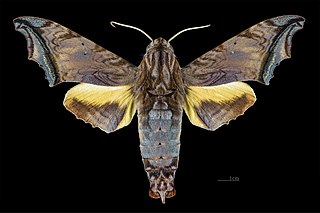
Nyceryx stuarti is a species of moth in the family Sphingidae.
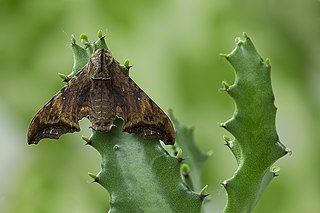
Nyceryx riscus is a moth of the family Sphingidae.

Eumorpha obliquus is a moth of the family Sphingidae. It is found from Belize, Guatemala, Nicaragua and Costa Rica south to Bolivia. It is also present in Brazil and Guadeloupe.























